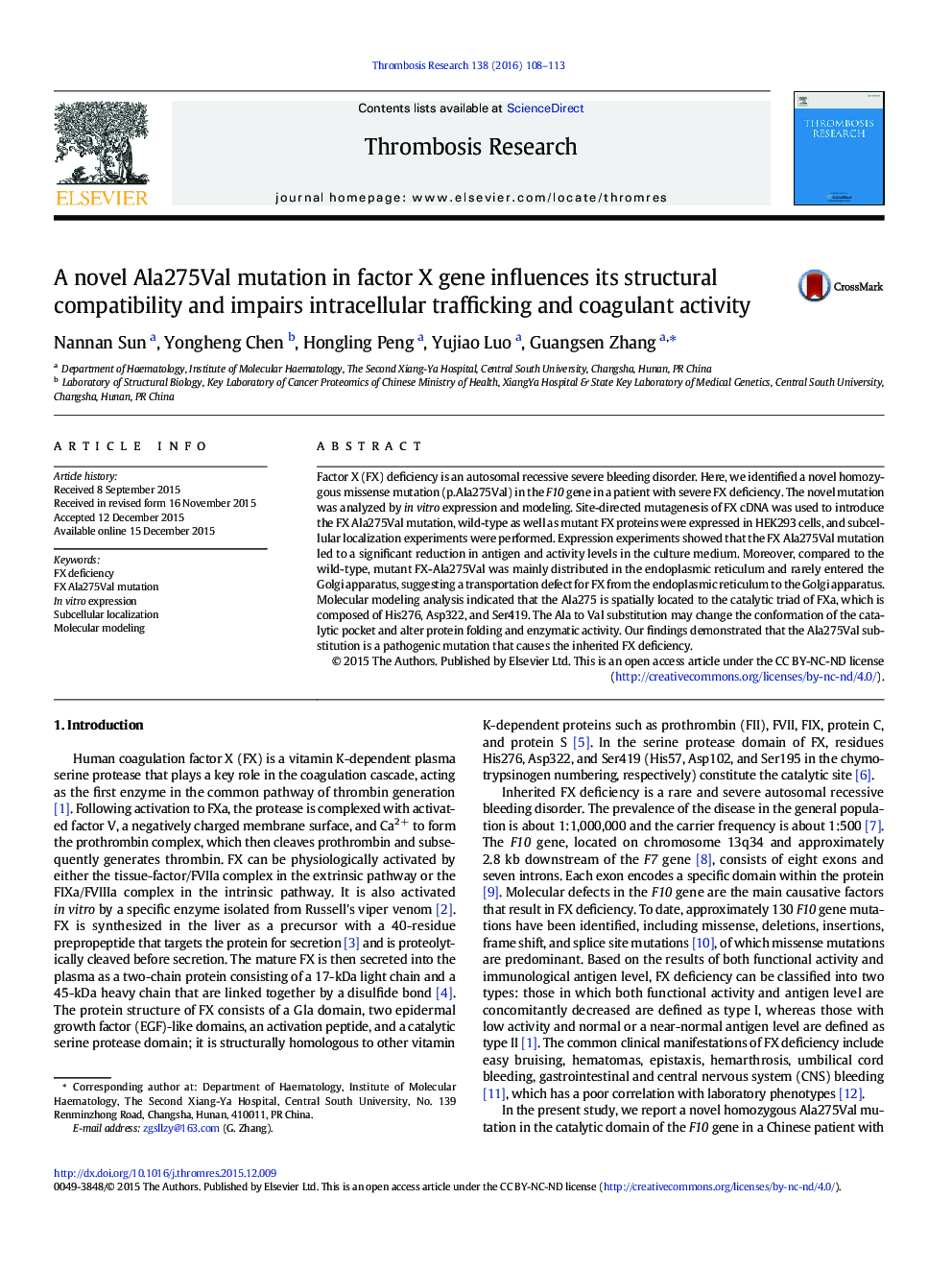| Article ID | Journal | Published Year | Pages | File Type |
|---|---|---|---|---|
| 6000686 | Thrombosis Research | 2016 | 6 Pages |
â¢Identification of a novel missense mutation (p. Ala275Val) in the F10 gene.â¢The novel mutation was analyzed by in vitro expression and modeling.â¢The Ala275Val mutation caused significantly reduced FX activity and antigen levels.
Factor X (FX) deficiency is an autosomal recessive severe bleeding disorder. Here, we identified a novel homozygous missense mutation (p.Ala275Val) in the F10 gene in a patient with severe FX deficiency. The novel mutation was analyzed by in vitro expression and modeling. Site-directed mutagenesis of FX cDNA was used to introduce the FX Ala275Val mutation, wild-type as well as mutant FX proteins were expressed in HEK293 cells, and subcellular localization experiments were performed. Expression experiments showed that the FX Ala275Val mutation led to a significant reduction in antigen and activity levels in the culture medium. Moreover, compared to the wild-type, mutant FX-Ala275Val was mainly distributed in the endoplasmic reticulum and rarely entered the Golgi apparatus, suggesting a transportation defect for FX from the endoplasmic reticulum to the Golgi apparatus. Molecular modeling analysis indicated that the Ala275 is spatially located to the catalytic triad of FXa, which is composed of His276, Asp322, and Ser419. The Ala to Val substitution may change the conformation of the catalytic pocket and alter protein folding and enzymatic activity. Our findings demonstrated that the Ala275Val substitution is a pathogenic mutation that causes the inherited FX deficiency.
